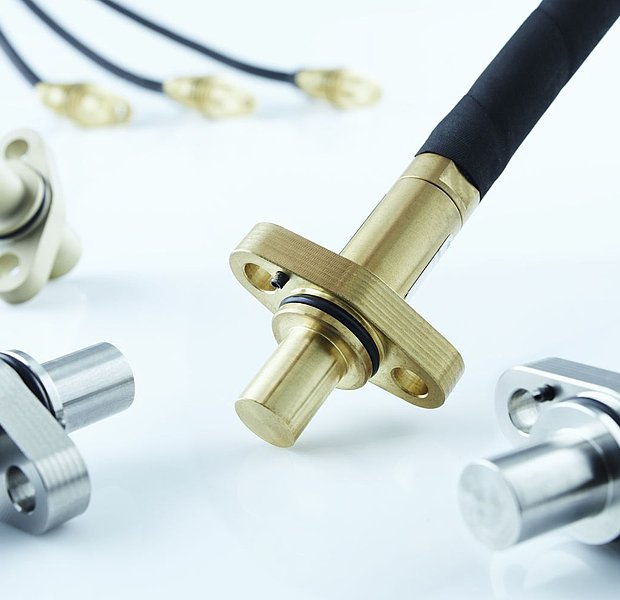
Speed sensor
EPHYMESS speed sensors are used to reliably detect the speed and direction of rotation. The speed and direction of travel of locomotives, multiple units and high-speed trains are determined from the sensor signal.
Hall effect with power supply
At a glance
- Reliable detection of rotation direction and speed
- Quick, easy installation
- Shock and vibration resistant as per DIN 61373 Cat. 3
- No wear, no maintenance
- Operating temperature up to +125°C
- Compact construction
- For ferromagnetic sensor wheels like iron or steel
- Push-pull signal in single (GS) or dual power (GD) design
Hall effect current loop
At a glance
- Reliable detection of rotation direction and speed
- Insensitive to interference voltages
- Shock and vibration resistant as per DIN 61373 Cat. 3
- Reverse polarity protection
- Operating temperature up to +125°C
- Compact construction
- For ferromagnetic sensor wheels like iron or steel
- Push-pull signal in single (GS) or dual power (GD) design
Eddy current
At a glance
- Auto-calibration at switch-on
- Amplification level saved digitally
- Detects direction and speed of rotation
- Simple installation
- Shock and vibration resistant as per DIN 61373 Cat. 3
- No wear, no maintenance
- Operating temperatures up to +125°C
- Housing made from brass, aluminium or stainless steel
- 1 channel design, 2 channel design
- Real zero speed
Technical information on speed sensors
General
Alongside temperature sensors, speed sensors are another component in EPHYMESS GmbH’s modular sensor concept for rail vehicles. They are used to reliably detect the speed and direction of rotation. The speed and direction of travel of locomotives, multiple units and high-speed trains are determined from the sensor signal.
Two different measuring principles are used in EPHYMESS speed sensors.
Speed sensors based on the Hall effect for ferromagnetic sensor wheels and speed sensors based on the eddy current principle for electrically conductive sensor wheels.
Use
EPHYMESS speed sensors can be installed in high-speed trains, metros and trams all over the world. Magnetic incremental encoders (Hall effect) are used in sensor wheels made from steel or iron (ferromagnetic). In (electrically conductive) aluminium cog wheels, speed sensors based on the eddy current principle make reliable measurement possible.
Operating principle
Speed sensors measure rotational movements on involute or rectangular geared sensor wheels in 1 and 2 channel versions. They are available for cog wheel modules from 1.0 to 3.0. They have a max. switching frequency of 20,000 Hz, or 25,000 Hz in special implementations. The speed sensors are also suitable for zero speed.
Since the magnets inside the speed sensor are resistant to high temperatures, the magnetisation remains unchanged across the entire temperature range of -50°C to 125°C. They are available as versions with a power supply (VL) or a current loop design (CL). The speed sensors offer excellent long-term stability.
The sensors meet the requirements of protection classes IPx6 and IPx8, and conform with the following standards: DIN EN 61373 Cat. 3, UIC 564-2, DIN EN 45545-2, DIN EN 50305, DIN EN 50121-3-2, DIN EN 60332-1-2, DIN EN 61034-2, DIN EN 60068-2-27, DIN EN 60947-5-2 and NF F16-101.
The constructions of the eddy current speed sensors are currently only produced for module 3. We will also be happy to develop a special version of this speed sensor for your specific use case.